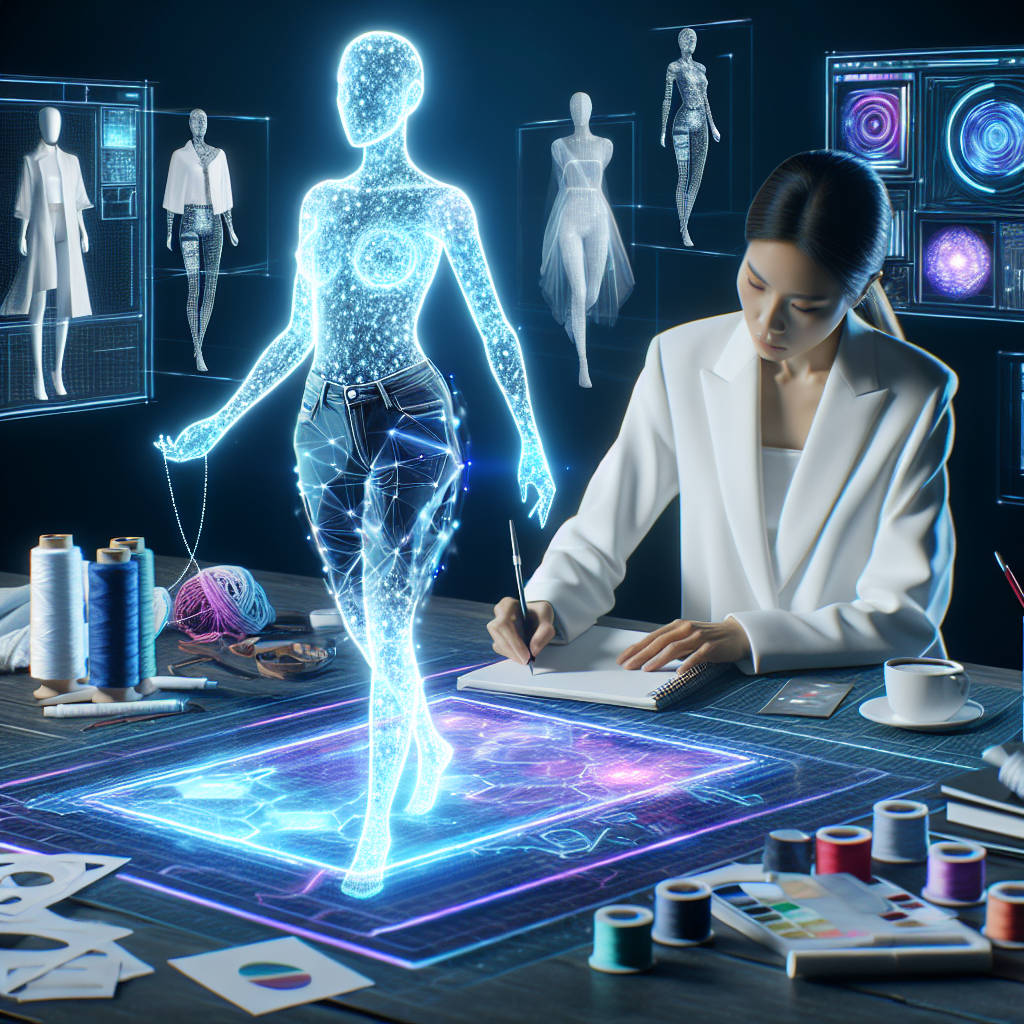The Future of Fashion Design: Can AI Replace Human Creativity?
Fashion design has always been a field that relies heavily on human creativity and intuition. From sketching out initial designs to selecting fabrics and colors, the process of creating a new garment has traditionally been a highly personal and subjective one. However, with the rapid advancements in artificial intelligence (AI) technology in recent years, there is a growing debate about whether AI can eventually replace human creativity in the field of fashion design.
AI has already made significant inroads into the fashion industry, with companies using machine learning algorithms to predict trends, personalize recommendations, and optimize supply chains. In the realm of design, AI has been used to generate new patterns, create virtual fashion models, and even design entire collections. These advancements have raised questions about the future role of human designers in an industry that is increasingly being driven by technology.
One of the main arguments in favor of AI replacing human creativity in fashion design is the ability of AI algorithms to process vast amounts of data and generate new ideas at a much faster rate than humans. AI can analyze consumer preferences, social media trends, and historical sales data to predict future trends and create designs that are tailored to the tastes of target audiences. This data-driven approach could potentially lead to more efficient and cost-effective design processes, as well as more accurate predictions of what will sell in the market.
Another advantage of AI in fashion design is its ability to automate repetitive tasks and streamline the design process. AI can generate thousands of design variations in a fraction of the time it would take a human designer, allowing for quicker iterations and more experimentation. This can be especially useful in the fast-paced world of fashion, where trends change rapidly and designers are constantly under pressure to produce new collections.
Additionally, AI can help designers overcome creative blocks and generate fresh ideas by suggesting new color palettes, fabric combinations, and design elements. By analyzing patterns in existing designs and consumer preferences, AI can identify trends and insights that human designers may have overlooked, leading to more innovative and marketable designs.
Despite these potential benefits, there are also concerns about the limitations of AI in replacing human creativity in fashion design. One of the main criticisms of AI-generated designs is the lack of emotional intelligence and cultural understanding that human designers bring to their work. Fashion is a deeply personal and subjective art form, and many argue that the unique perspective and creative intuition of human designers cannot be replicated by algorithms.
Another challenge is the risk of homogenization and lack of diversity in AI-generated designs. AI algorithms are trained on existing data sets, which can perpetuate biases and limitations in the design process. This can lead to a lack of originality and diversity in the designs generated by AI, as they may simply replicate existing trends and patterns rather than creating truly innovative and unique designs.
Furthermore, there is a concern about the impact of AI on the job market for human designers. As AI technology becomes more advanced and widespread, there is a fear that it could lead to the displacement of human designers and a loss of creative jobs in the industry. This raises ethical questions about the role of technology in shaping the future of work and the implications for the livelihoods of designers and other creative professionals.
In conclusion, the future of fashion design is likely to be a hybrid of human creativity and AI technology. While AI has the potential to revolutionize the design process and drive innovation in the industry, it is unlikely to completely replace the unique perspective and creative intuition of human designers. The most successful designers in the future will be those who are able to harness the power of AI technology to enhance their creative vision and bring new ideas to life in ways that resonate with consumers.
FAQs:
Q: Can AI really replace human creativity in fashion design?
A: While AI has the potential to automate certain aspects of the design process and generate new ideas at a faster rate, it is unlikely to completely replace the unique perspective and creative intuition of human designers. Fashion is a deeply personal and subjective art form, and the emotional intelligence and cultural understanding that human designers bring to their work cannot be replicated by algorithms.
Q: How can AI enhance the creative process in fashion design?
A: AI can help designers overcome creative blocks and generate fresh ideas by suggesting new color palettes, fabric combinations, and design elements. By analyzing patterns in existing designs and consumer preferences, AI can identify trends and insights that human designers may have overlooked, leading to more innovative and marketable designs.
Q: What are the limitations of AI in fashion design?
A: One of the main limitations of AI in fashion design is the lack of emotional intelligence and cultural understanding that human designers bring to their work. AI algorithms are trained on existing data sets, which can perpetuate biases and limitations in the design process. This can lead to a lack of originality and diversity in the designs generated by AI.
Q: What is the future of work for human designers in the age of AI?
A: As AI technology becomes more advanced and widespread, there is a fear that it could lead to the displacement of human designers and a loss of creative jobs in the industry. It is important for designers to embrace AI technology as a tool to enhance their creative vision and bring new ideas to life, rather than seeing it as a threat to their livelihoods.

